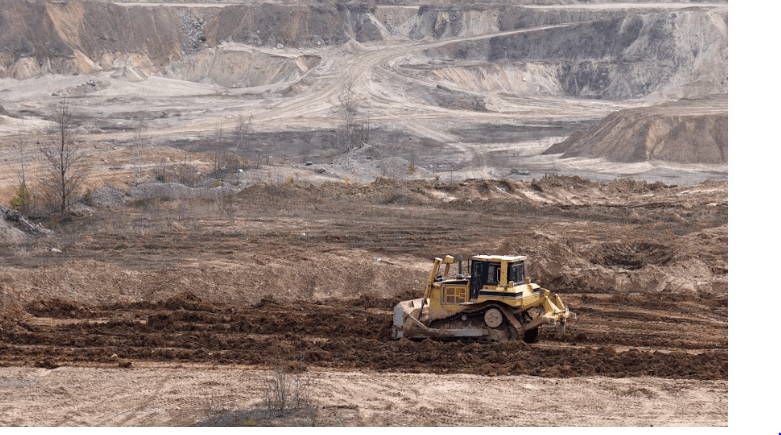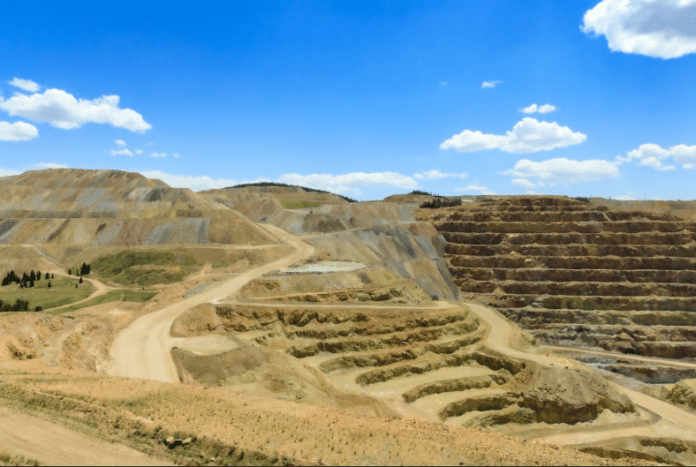As the world grapples with the increasing demand for resources and the environmental consequences of mining, mine reclamation emerges as a vital yet complex process. This transformative endeavor not only presents an opportunity to address the ecological scars left by mining operations but also unveils the potential for revitalizing once-barren landscapes into thriving ecosystems, recreational spaces, or economically productive sites.
This article examines the multifaceted world of mine reclamation, exploring the benefits and challenges associated with breathing new life into these post-mining landscapes.
What Is Mine Reclamation?
Mine reclamation entails restoring mined land to a stable, productive, and environmentally sound condition after ceasing mining operations. This involves a series of steps, including land recontouring, soil replacement, revegetation, and habitat restoration.
- Land recontouring involves reshaping the mined terrain to mimic its original contours or create new landforms that promote stability and support ecological functions.
- Soil replacement entails returning salvaged topsoil and subsoil to the site, providing a fertile base for plant growth and fostering the development of a self-sustaining ecosystem.
- Revegetation encompasses planting native trees, shrubs, and grasses, contributing to soil stabilization, carbon sequestration, and wildlife habitat creation.
- Habitat restoration focuses on recreating or enhancing specific environments to support the recovery of local flora and fauna, ultimately fostering biodiversity and promoting ecosystem resilience.
The ultimate goal of mine reclamation is to create a self-sustaining ecosystem that requires minimal long-term maintenance and is compatible with the surrounding landscape. Reclamation is a crucial aspect of responsible mining practices and is often mandated by laws and regulations to minimize the environmental impacts of mining and promote sustainable land use.
The Benefits Of Mine Reclamation
Mine reclamation, an essential component of responsible mine closure, offers numerous benefits that extend beyond the mining industry:
- Environmental Restoration: Reclaiming mined lands helps restore ecosystems and natural habitats disrupted during the extraction process. This includes soil stabilization, reforestation, and the creation of wetlands, ultimately promoting biodiversity and ecological resilience.
- Climate Change Mitigation: Reclaimed mine sites can act as carbon sinks by supporting the growth of vegetation and forests that absorb carbon dioxide from the atmosphere.
- Flood Control: Restoring natural drainage patterns and creating retention basins in reclaimed areas can help mitigate flooding risks in surrounding communities.
- Aesthetic Improvement: Mine reclamation can transform visually unappealing, degraded landscapes into attractive spaces, contributing to the overall aesthetic value of the region.
- Community Revitalization: Mine reclamation projects can create new recreational spaces, such as parks, hiking trails, and wildlife reserves, fostering a sense of community pride and well-being.
- Economic Opportunities: Transforming former mine sites into commercial or industrial properties generates new job opportunities and stimulates local economies.
- Improved Public Health And Safety: By addressing hazardous materials, erosion, and water pollution, mine reclamation reduces potential health risks and ensures the safety of nearby communities.
The Challenges Of Mine Reclamation

Despite the numerous benefits, mine reclamation is not without its challenges:
- Unforeseen Environmental Issues: The presence of acid mine drainage, heavy metal contamination, or other hazardous substances can complicate reclamation efforts and require additional remediation measures.
- Technical Difficulties: Reclaiming mined lands involves complex engineering tasks, such as stabilizing steep slopes, managing contaminated water, and restoring soil quality. These challenges require innovative and specialized techniques to ensure effective reclamation.
- Financial Constraints: Mine reclamation can be expensive, requiring significant planning, engineering, and monitoring investments. Securing adequate funding and ensuring that mining companies adhere to their financial responsibilities is crucial to a successful reclamation.
- Regulatory And Permitting Hurdles: Navigating the complex web of regulations and permits associated with mine reclamation can be time-consuming and challenging. Ensuring compliance with local, regional, and national laws is essential to avoid legal issues and potential fines.
- Long-Term Monitoring: Effective mine reclamation requires ongoing monitoring and maintenance to ensure the continued success of environmental restoration efforts. This long-term commitment can pose logistical and financial challenges for the mining industry and regulatory agencies.
- Climate Impacts: Climate change can affect reclamation outcomes, as changes in precipitation patterns, temperature, and extreme weather events can influence the success of revegetation efforts and the stability of reclaimed sites.
- Invasive Species: Introducing invasive plant or animal species during reclamation can have unintended consequences for local ecosystems, potentially outcompeting native species and disrupting established ecological relationships.
- Public Perception And Stakeholder Engagement: Gaining public support and effectively engaging with stakeholders, including local communities, government agencies, and environmental organizations, can be a challenging yet essential aspect of mine reclamation planning and implementation.
Final Thoughts
Mine reclamation represents an opportunity to restore the ecosystem and create a sustainable future. While the benefits of mine reclamation are substantial, ranging from environmental restoration to economic opportunities, the process is fraught with technical, financial, and regulatory challenges.
By working collaboratively with stakeholders, embracing innovative techniques, and maintaining a long-term vision, restoration companies can overcome these hurdles and foster a harmonious balance between resource extraction and environmental stewardship.


